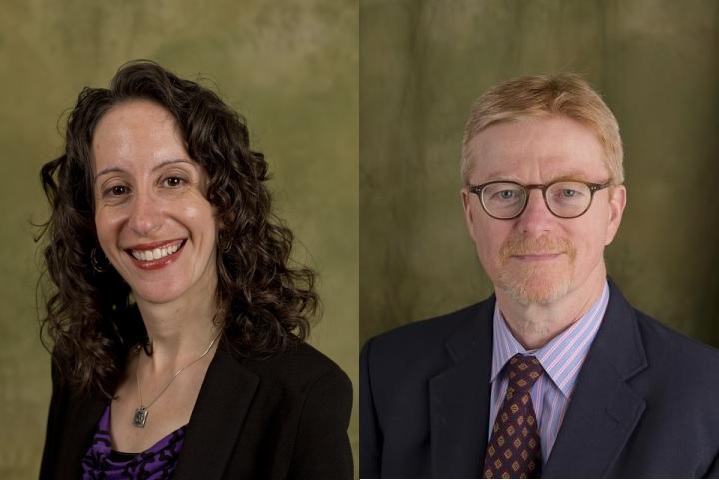A simulation of a global pandemic, which was created by a professor of literature and a professor of political science at Clarkson University to team teach their course “Violence and Reconciliation,” is extra relevant today, as levels of COVID-19 reach new highs around the world.

PS: Political Science & Politics, a premier political science journal, has published an article, “Pandemic Fiction Meets Political Science: A Simulation for Teaching Restorative Justice,” which was written by the two professors about their interdisciplinary course.
The authors, Assistant Professor of Literature Lisa Propst, and Associate Provost for Faculty Achievement and Professor of Political Theory and Public Law Christopher C. Robinson, team teach the class, which features case studies on the South African Truth and Reconciliation Commission (TRC) and on debates about whether to develop a TRC in Northern Ireland after The Troubles in the late 20th century.
“The students engage thinkers and texts from literary, religious and secular, philosophical, legal and social scientific fields of study,” says Propst, “in order to grasp the history of strife in an area and to unleash imaginative ways of interrupting structures of domination and patterns of violence.”
The course culminates in a two-week simulation in which students role play the experiences, strategies, and needs of victims, perpetrators, legal teams, government officials, and NGOs in the aftermath of a horrific event that has torn a society apart.
The simulation is set in the United States in 2072, after a three-decade pandemic caused by a fictional antimicrobial resistant bacterium.
“Although we wrote the simulation several years before COVID-19, it takes on new relevance now in the face of a pandemic that has put existing divisions into relief as people of color, Indigenous communities, and low-income communities are disproportionately affected and as political ideologies shape policy responses,” says Propst.
Through the simulation, the students explore restorative justice, which seeks to repair the harm done by the crime and heal the underlying membrane of trust that supports the social order, as opposed to retributive justice, which seeks to punish the perpetrator of a crime after a legal process that ends in a verdict.
The simulation was inspired by a range of sources, including South Africa’s transition to democracy, Japanese internment camps in the United States, and growing concerns about antimicrobial resistance. The professors’ inspiration also came from Margaret Atwood’s dystopian novel Oryx and Crake, in which scientists live in gated compounds as environmental disasters and economic inequality devastate the United States until a genetic engineer develops a pandemic that destroys the population.
“We made scientists, engineers, and physicians the primary targets of persecution in the simulation because most students in the course are engineering and science majors fulfilling general education requirements,” says Propst.
In the article, the professors say that what led them into team teaching was their mutual interest in reconciliation, restorative justice, and problem-based learning.
Propst is a literary scholar who studies the ethical issues involved in telling stories about injustice and the roles that fiction can play in creating new communal bonds in the face of conflict.
Robinson is a political theorist interested in employing features of restorative justice and radical democracy to advance a just transition away from a carbon-based economy to a steady-state economy fueled by renewable energy sources in the face of global climate change.
“We have found that this course is an effective way to help students move from a scholarly engagement with the tools and processes of restorative justice to employing them in response to trust-effacing hatred and violence,” says Robinson.
Propst and Robinson drew on both disciplinary backgrounds to develop the simulation and have since taught three iterations of the course.
“This article really showcases what faculty do at Clarkson to give our students the best possible education experience,” adds Robinson. “This is an interdisciplinary class taught by a professor of literature and a professor of political science. The simulation at the core of the course is an excellent example of experiential learning.”
PS: Political Science & Politics is a quarterly peer-reviewed academic journal covering all aspects of contemporary political phenomena and political science, which is published by Cambridge University Press on behalf of the American Political Science Association.

